Climate Change
Introduction
The primary assessment reveals that the national capital's climate is tropical savanna climate (Aw according to Köppen's classification) with average temperature of about 20.5 °C and two very well defined seasons (i.e. dry and cold winters; and warm and humid summers). The dry season lasts from late March to late September, although some rain can occur even in July, and humidity averages often fall below 20% around noon. Nevertheless, the availability of water in the Federal District is directly dependent on the annual rainy season, and therefore any change in the rainfall distribution can strongly affect the water supply system.
The necessary adaptation to the effects of population growth, land-use and climate changes are now a great challenge for the Brazil’s national capital, and therefore the issues are to be addressed by the IWAS/Água-DF framework. Following the conceptual idea of the IWAS Tool box, and the demand of other working groups (i.e. Hydrological Cycle and Sedimentation), the task of the Working Group I (i.e. Climate Change) is to investigate important climate patterns over Central Brazil, as well as to develop climate change scenarios appropriated for the water resource management of Distrito Federal.
Up to now, Global Climate Models (GCM) are the only tools capable to simulate the response of a climate system to increasing anthropogenic activities (e.g., land use, greenhouse gas concentrations). However, the climate change information required for water resources management is of a spatial scale much finer than that provided by global models and, therefore, regionalization (or spatial-downscaling) techniques are unquestionably required so that refined regional climate information can be obtained.
In this framework, we propose to assess the Distrito Federal’s climate by identifying significant trends observed in the last decades, as well as to develop regional climate scenarios derived from GCM outputs through the application of proper downscaling methods, both dynamic and statistical.
Objectives
- Assessment of the observed climate data in order to identify possible trends in the last decades;
- Intercomparisons of dynamic and statistical approaches in order to test the reliability of the methods for the concerning region;
- Provide regional climate change scenarios for the input of models (i.e., WG3 - Hydrological Cycle and WG4 - Sedimentation);
- Provide a final documentation addressed for further vulnerability and adaptation assessments.
Methods / Data
Before considering future climate, it is important to specify the climatological baseline so that a basis for assessing future impacts of climate change can be attained. The present-day climate –often referred to as the baseline– is also required for calibrating and validating downscaling techniques. Second, changes in climate conditions and variability under enhanced greenhouse gas effects can be derived, so far, mainly from Global Climate Models. Finally, climate scenarios are obtained by combining model-based changes in climate with a baseline climate (see Figure 1).
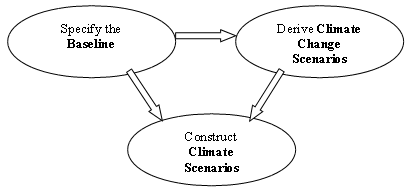
Figure 1: general steps for developing climate scenarios.
Baseline climate
Regarding to the source of climatological data, the national meteorological agency INMET, together with the National Water Agency (Agência Nacional de Águas – ANA), have provided substantial observation data from around fifty stations (Figure 2). These data have being proved under standard criteria, for instance on duration and gaps as shown in Figure 3. Nevertheless, in order to overcome the problem of sparse and irregular meteorological observations, the climate baseline is likely to be enhanced with high resolution gridded datasets provided by Climate Research Unit (CRU) and National Centers for Environmental Predictions (NCEP).
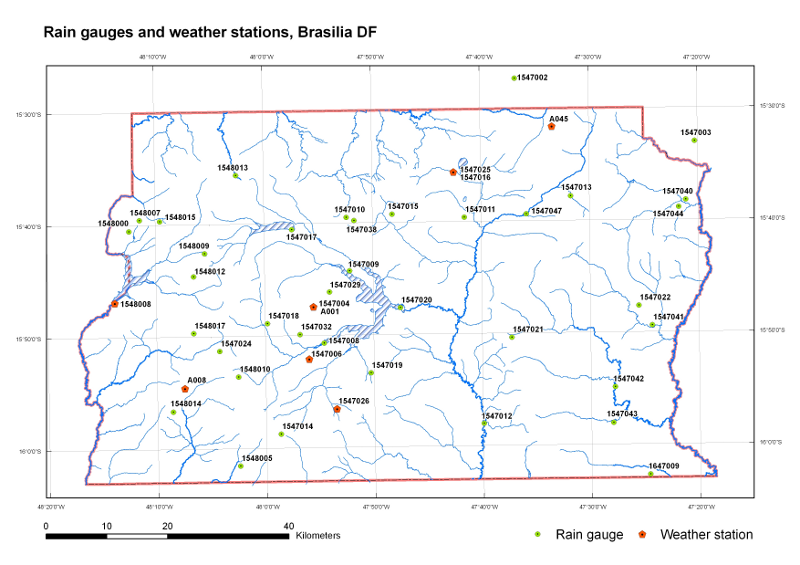
Figure 2: Distribution of rain gauge and weather stations in Distrito Federal and influence area.
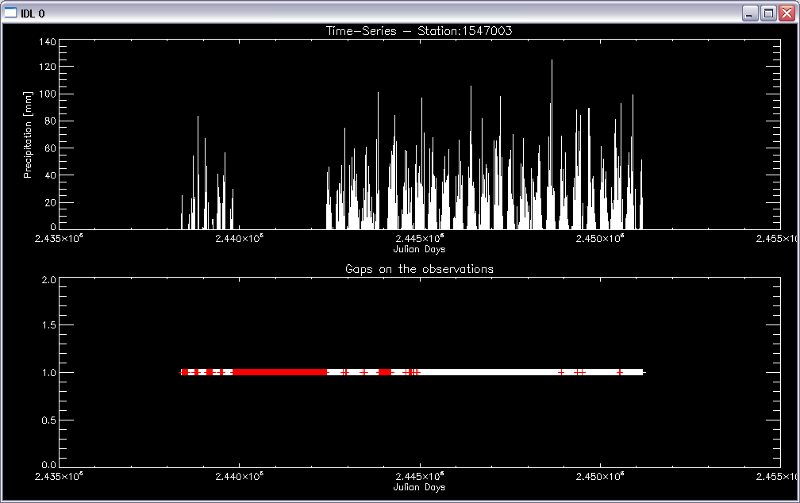
Figure 3: Range of the time-series and gaps as important criteria for the selection of baseline data.
Climate change scenarios
Previous work has reviewed publications on comparisons of GCM present-day simulations with observed climate under the South America domain. The literature review concludes that, although the performance depends critically on the climate variables being analyzed, the ECHAM5/MPI OM, MIROC 3.2 hires and medres are the models that more realistically represent the climate patterns over central Brazil. The selection is a combination of four criteria, with emphasis on the best validated and representative models. Model details are described in Table 1.
Table 1: List of the Global Climate Models likely to be used in the present work.
| Acronym | Model Name | Research Group |
|---|---|---|
| MPI | ECHAM5/MPI OM | Max Planck Institute for Meteorology, Germany |
| MIROC hires | MIROC 3.2 high resolution | Center for Climate System Research / National Institute for Environmental/ Frontier Research Center for global Change, Japan |
| MIROC medres | MIROC 3.2 medium resolution | Center for Climate System Research / National Institute for Environmental/ Frontier Research Center for global Change, Japan |
Projections were established with a range until 2050 and include pessimist (i.e., A1), moderate (i.e., A1B) and optimist (i.e., B2) scenarios as established by IPCC on the SRES report.
Spatial Downscaling and Climate Scenarios
Since the climate change information required for application at the watershed level is of a much finer spatial scale than the one provided by global climate models, GCM outputs need to be downscaled. For that various techniques are available, for instance statistical downscaling and dynamic downscaling. Statistical downscaling applies the information from GCMs to the region by using a series of equations (e.g., linear regression) to relate variations in global climate to variations in local climate. Dynamic downscaling involves using numerical meteorological modeling to reflect how global patterns affect local weather conditions. Finally, the climate scenarios are obtained through the difference between the baseline and regionalized climate change scenarios.
Participating research groups
- Prof. C. Bernhofer, P. Borges, Technische Universität Dresden (TUD), Department of Hydrosciences, Institute of Meteorology
- Dr. L. T. G. Fortes, Instituto Nacional de Meteorologia (INMET)
- Dr. R. P. da Rocha, Universidade de São Paulo (USP), Department of Atmospheric Sciences
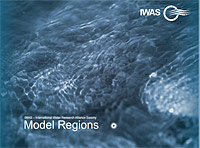
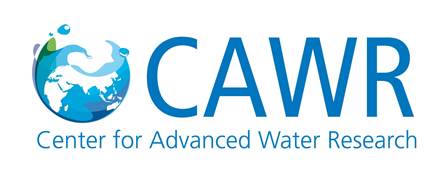


.png)
.png)
